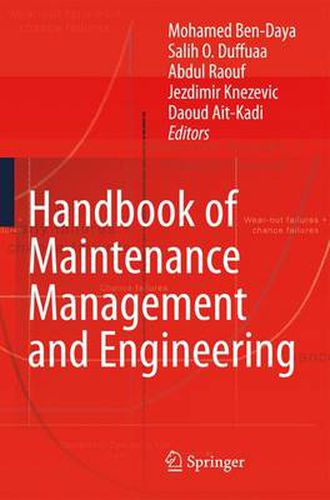Readings Newsletter
Become a Readings Member to make your shopping experience even easier.
Sign in or sign up for free!
You’re not far away from qualifying for FREE standard shipping within Australia
You’ve qualified for FREE standard shipping within Australia
The cart is loading…






This title is printed to order. This book may have been self-published. If so, we cannot guarantee the quality of the content. In the main most books will have gone through the editing process however some may not. We therefore suggest that you be aware of this before ordering this book. If in doubt check either the author or publisher’s details as we are unable to accept any returns unless they are faulty. Please contact us if you have any questions.
To be able to compete successfully both at national and international levels, production systems and equipment must perform at levels not even thinkable a decade ago. Requirements for increased product quality, reduced throughput time and enhanced operating effectiveness within a rapidly changing customer demand environment continue to demand a high maintenance performance. In some cases, maintenance is required to increase operational effectiveness and revenues and customer satisfaction while reducing capital, operating and support costs. This may be the largest challenge facing production enterprises these days. For this, maintenance strategy is required to be aligned with the production logistics and also to keep updated with the current best practices. Maintenance has become a multidisciplinary activity and one may come across situations in which maintenance is the responsibility of people whose training is not engineering. This handbook aims to assist at different levels of understanding whether the manager is an engineer, a production manager, an experienced maintenance practitioner or a beginner. Topics selected to be included in this handbook cover a wide range of issues in the area of maintenance management and engineering to cater for all those interested in maintenance whether practitioners or researchers. This handbook is divided into 6 parts and contains 26 chapters covering a wide range of topics related to maintenance management and engineering.
$9.00 standard shipping within Australia
FREE standard shipping within Australia for orders over $100.00
Express & International shipping calculated at checkout
This title is printed to order. This book may have been self-published. If so, we cannot guarantee the quality of the content. In the main most books will have gone through the editing process however some may not. We therefore suggest that you be aware of this before ordering this book. If in doubt check either the author or publisher’s details as we are unable to accept any returns unless they are faulty. Please contact us if you have any questions.
To be able to compete successfully both at national and international levels, production systems and equipment must perform at levels not even thinkable a decade ago. Requirements for increased product quality, reduced throughput time and enhanced operating effectiveness within a rapidly changing customer demand environment continue to demand a high maintenance performance. In some cases, maintenance is required to increase operational effectiveness and revenues and customer satisfaction while reducing capital, operating and support costs. This may be the largest challenge facing production enterprises these days. For this, maintenance strategy is required to be aligned with the production logistics and also to keep updated with the current best practices. Maintenance has become a multidisciplinary activity and one may come across situations in which maintenance is the responsibility of people whose training is not engineering. This handbook aims to assist at different levels of understanding whether the manager is an engineer, a production manager, an experienced maintenance practitioner or a beginner. Topics selected to be included in this handbook cover a wide range of issues in the area of maintenance management and engineering to cater for all those interested in maintenance whether practitioners or researchers. This handbook is divided into 6 parts and contains 26 chapters covering a wide range of topics related to maintenance management and engineering.